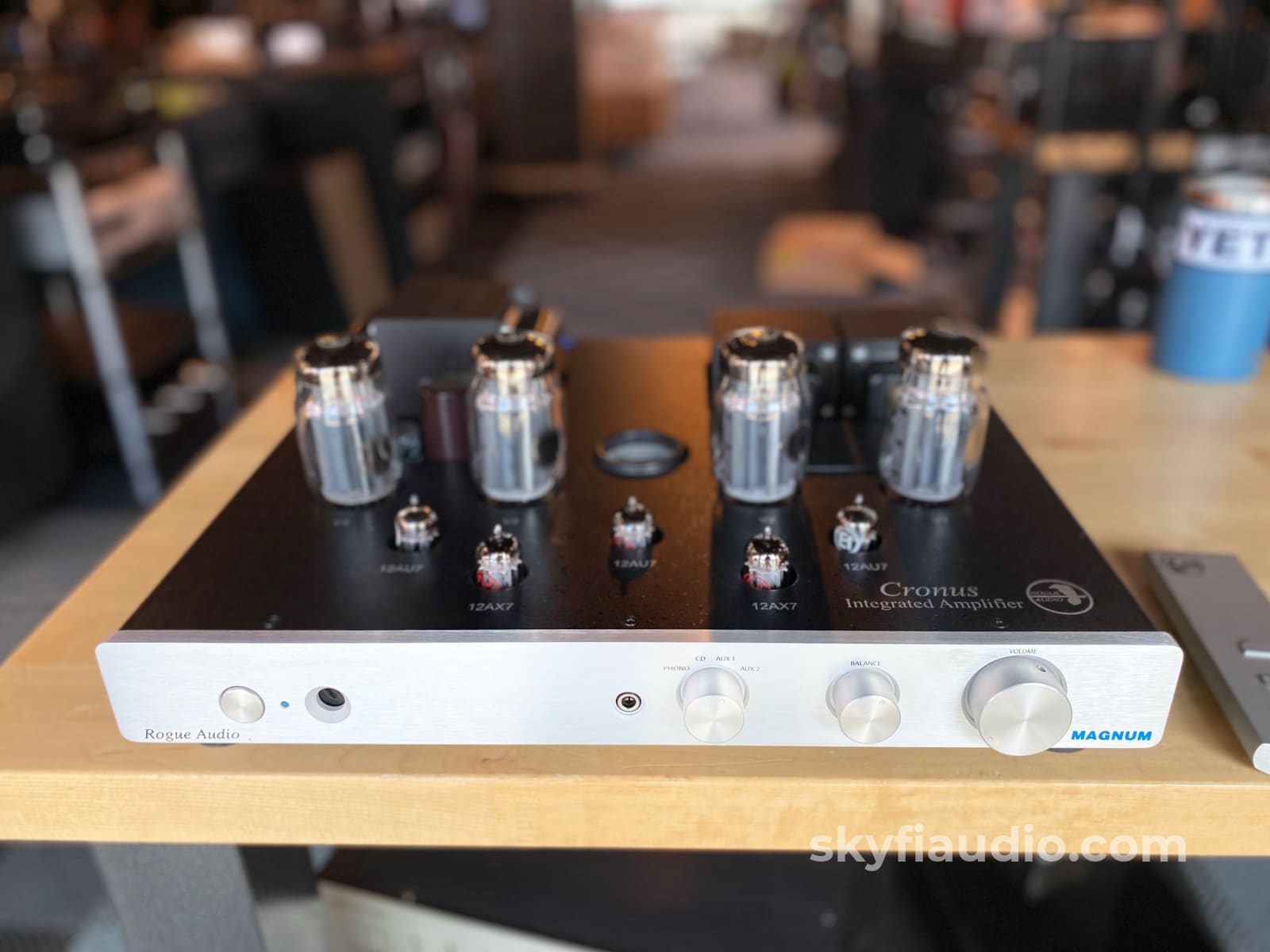
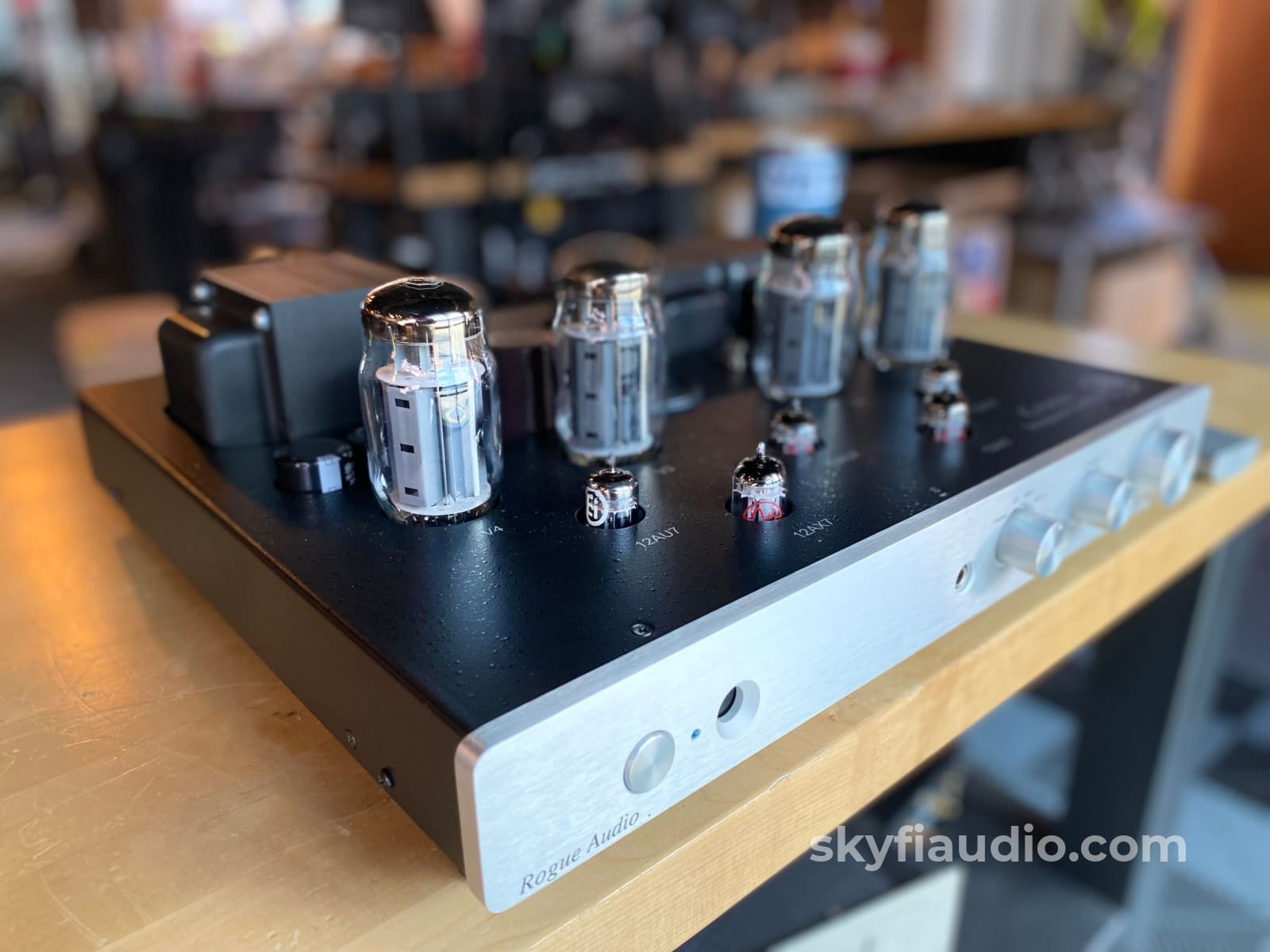
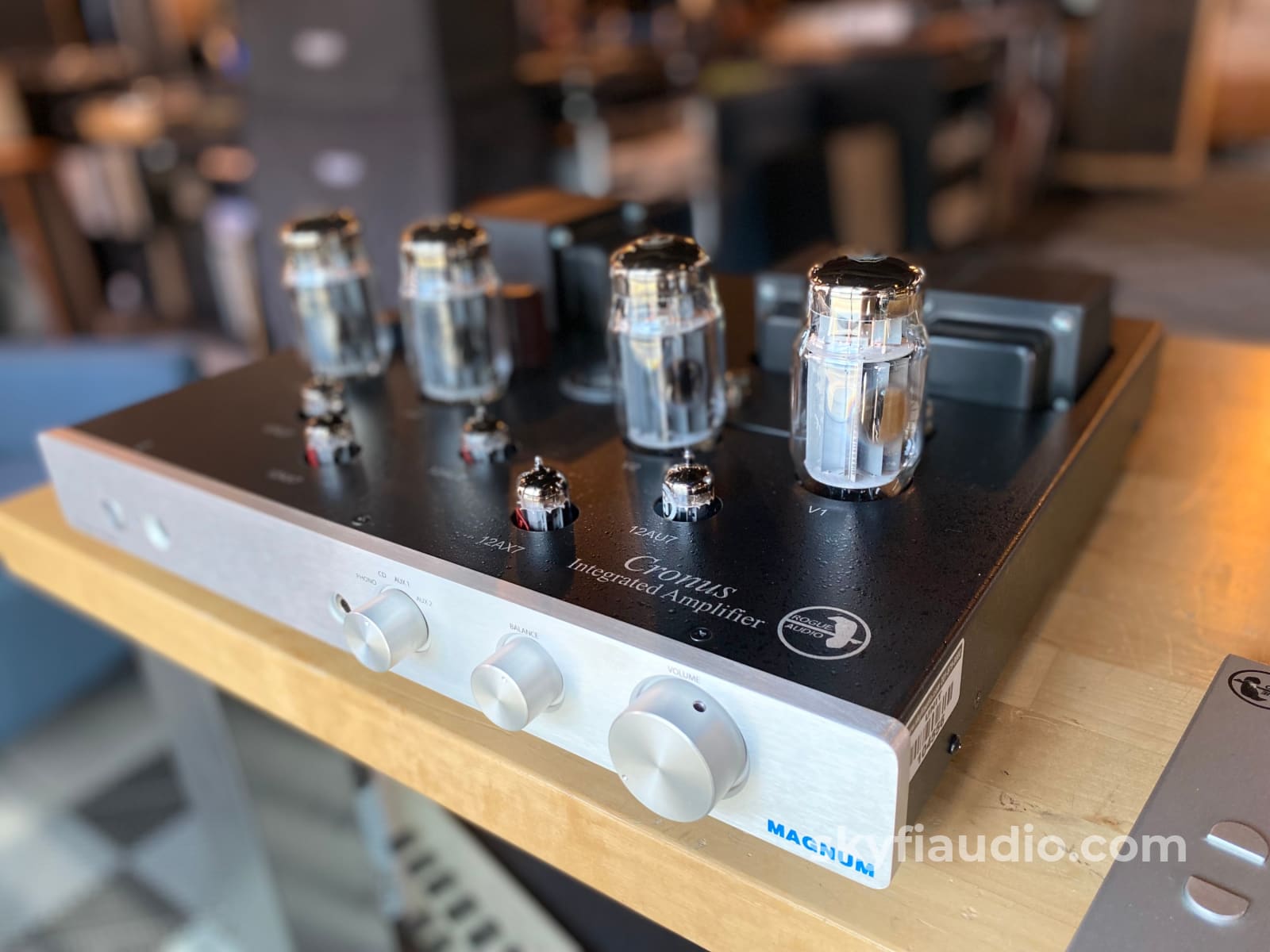
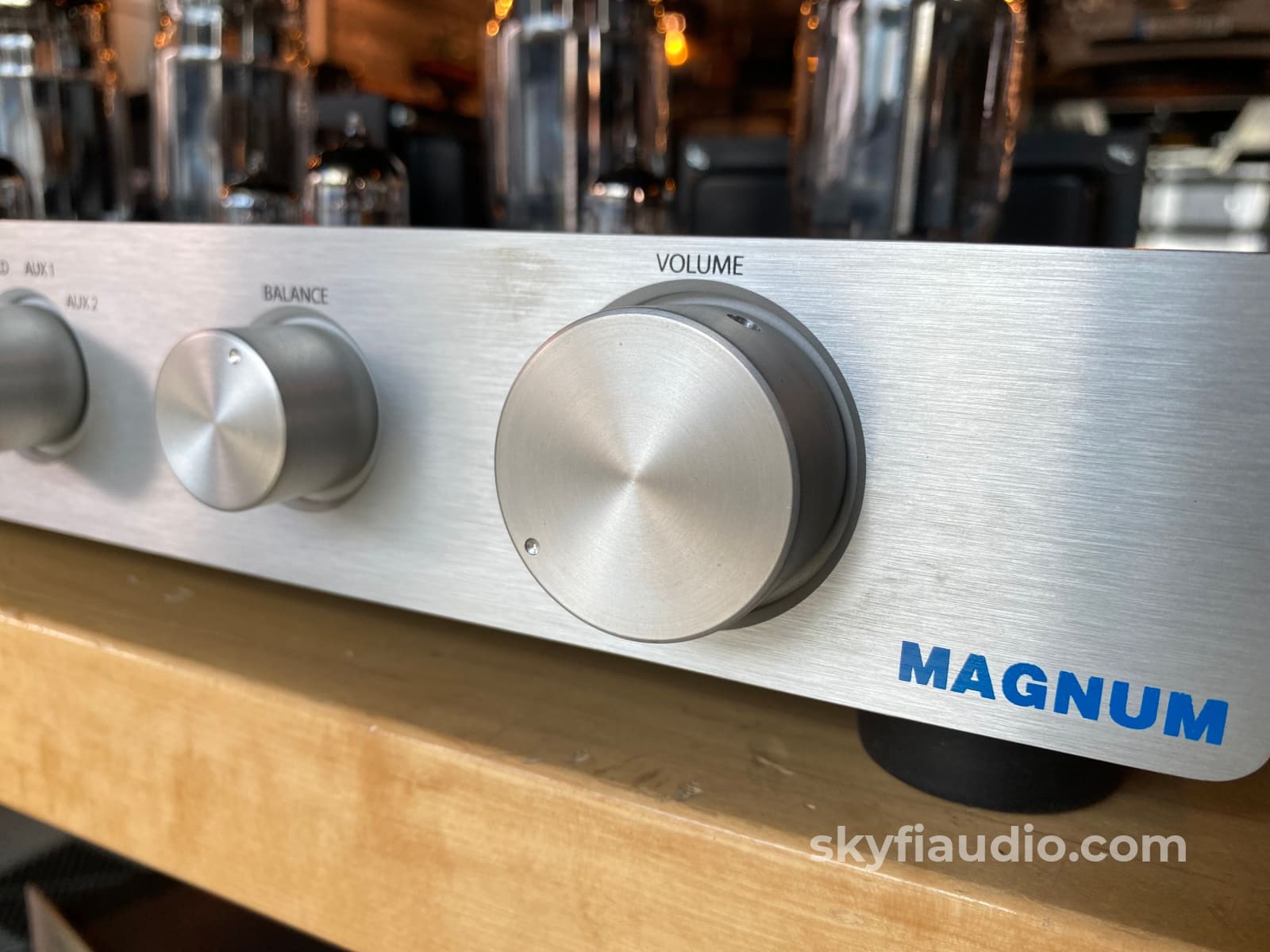
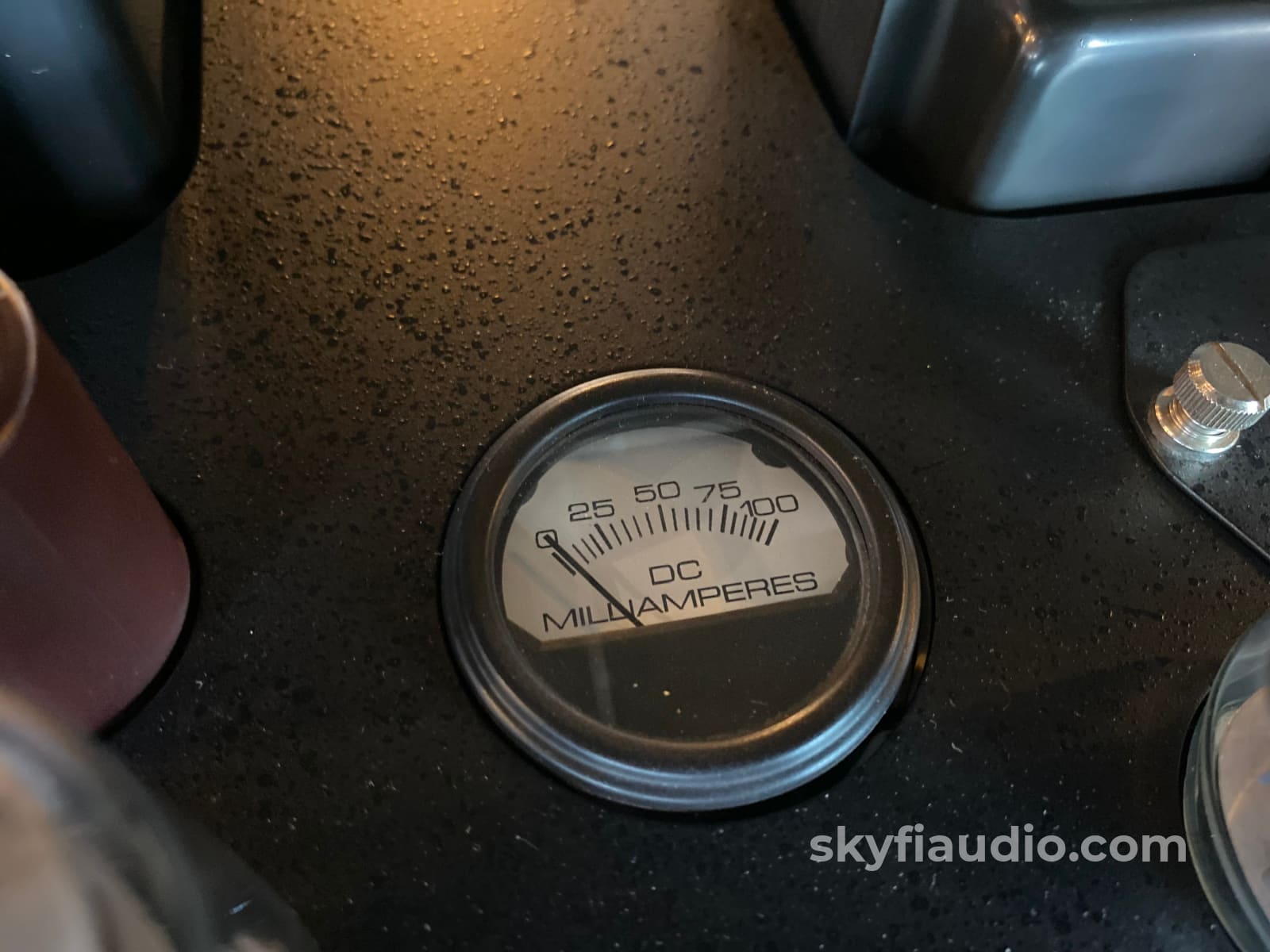
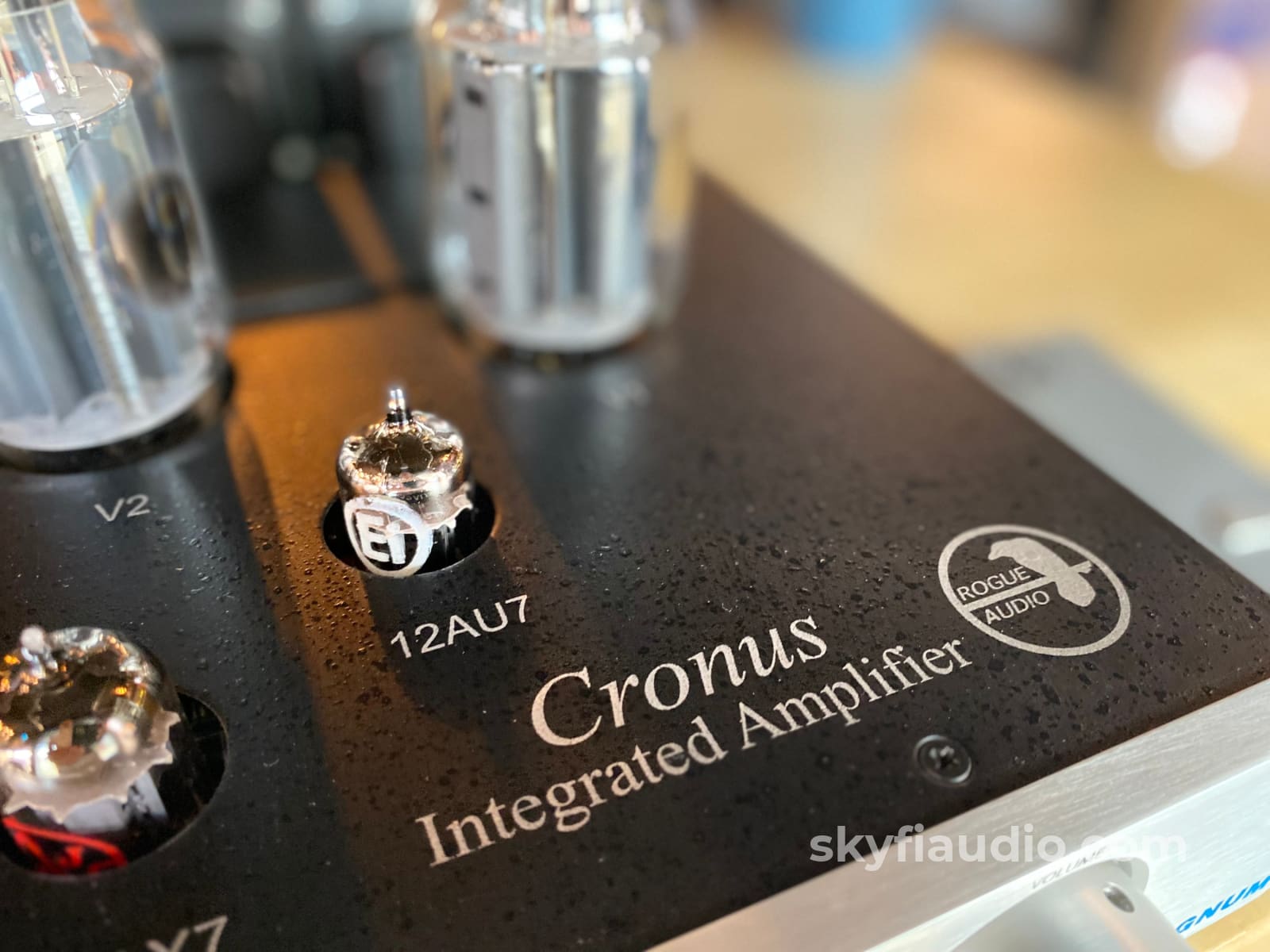

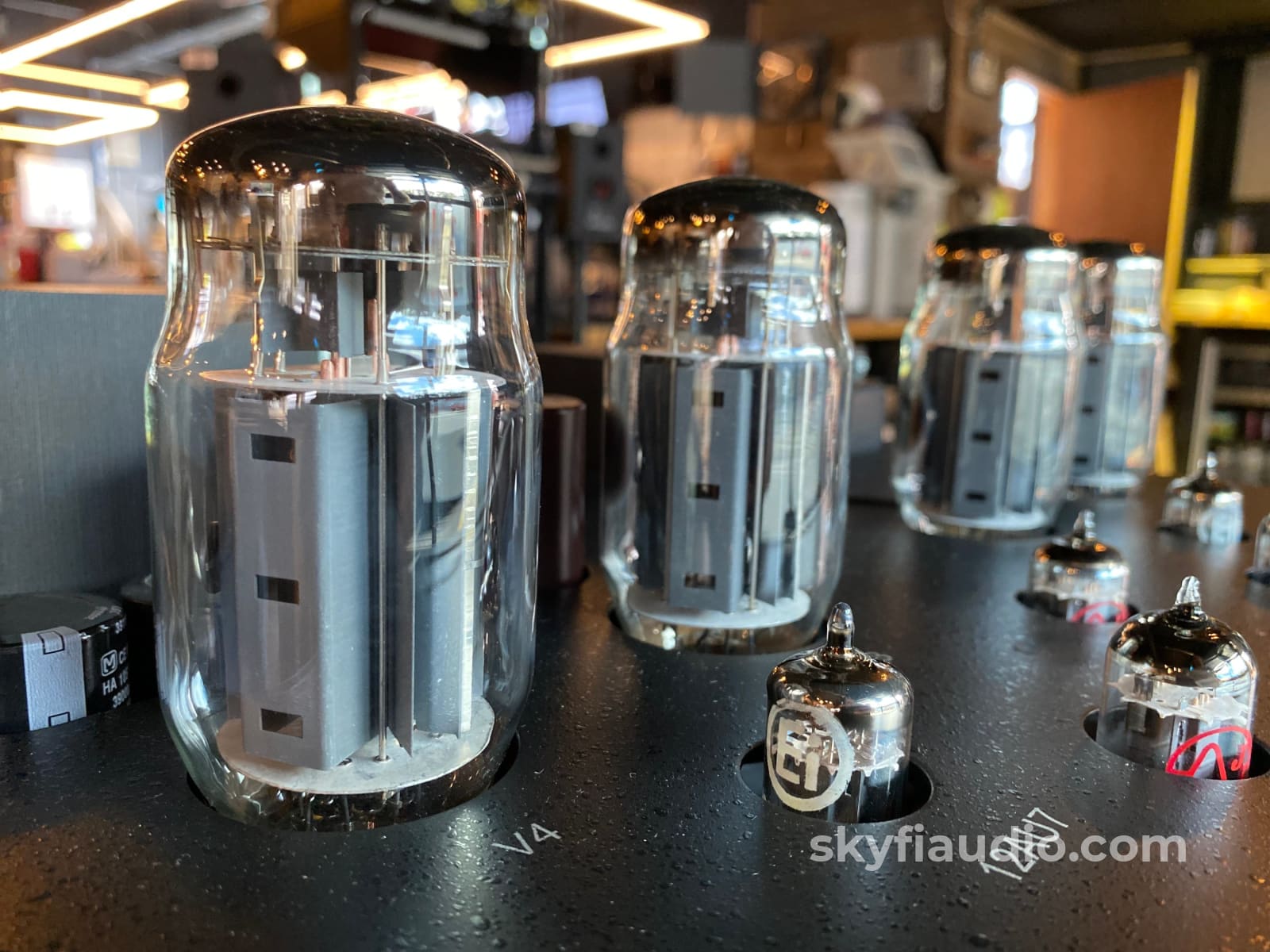

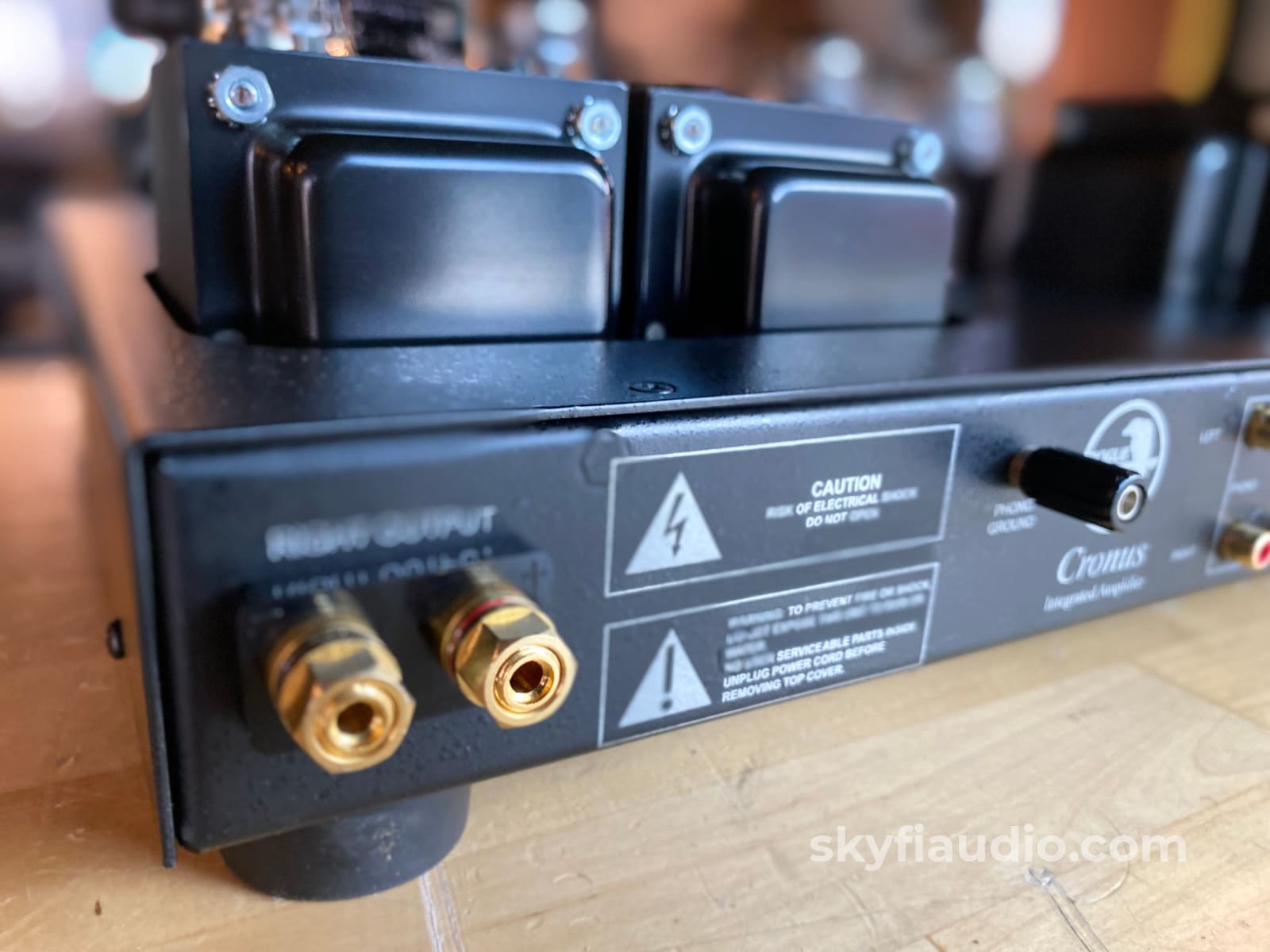
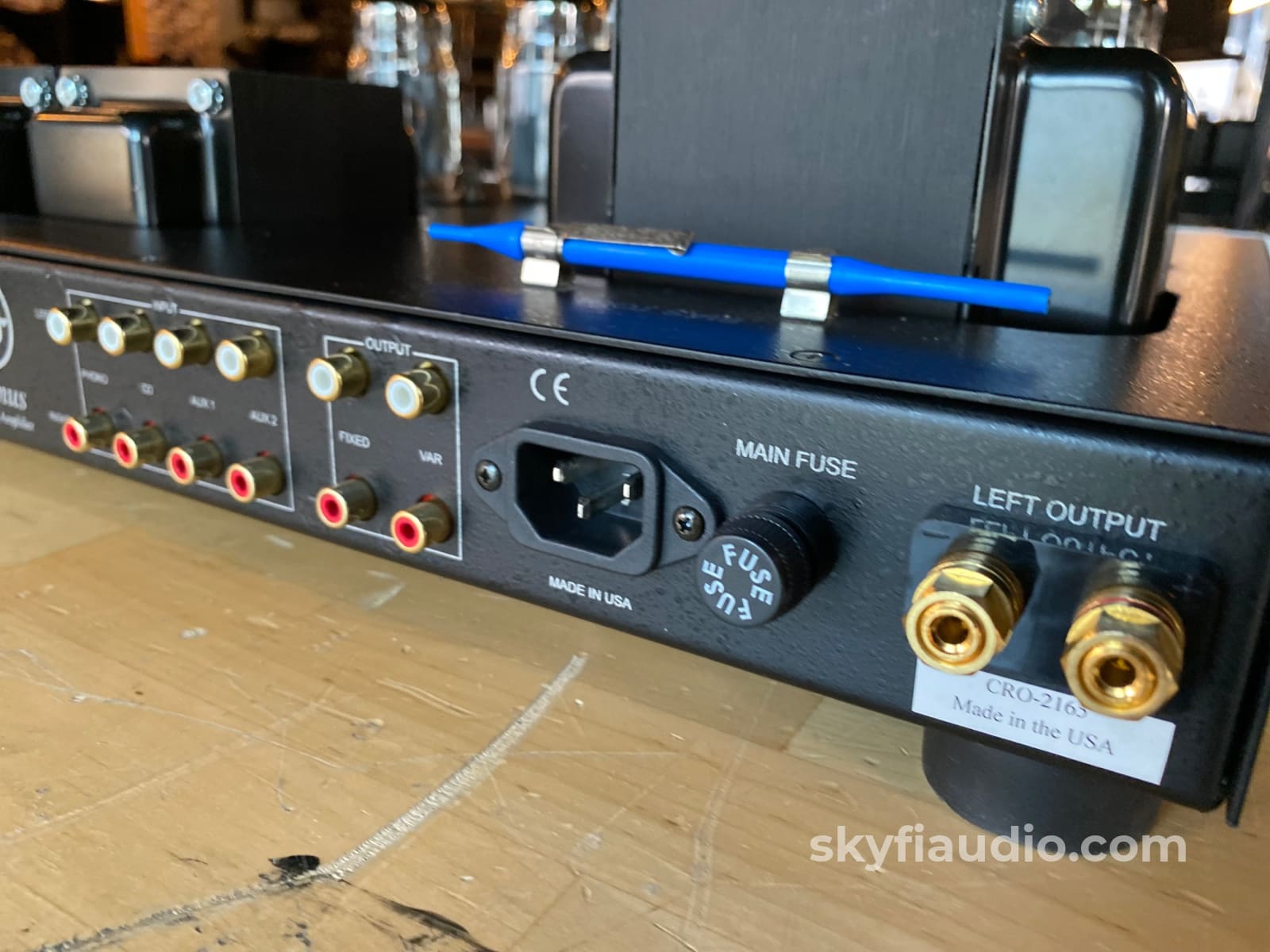


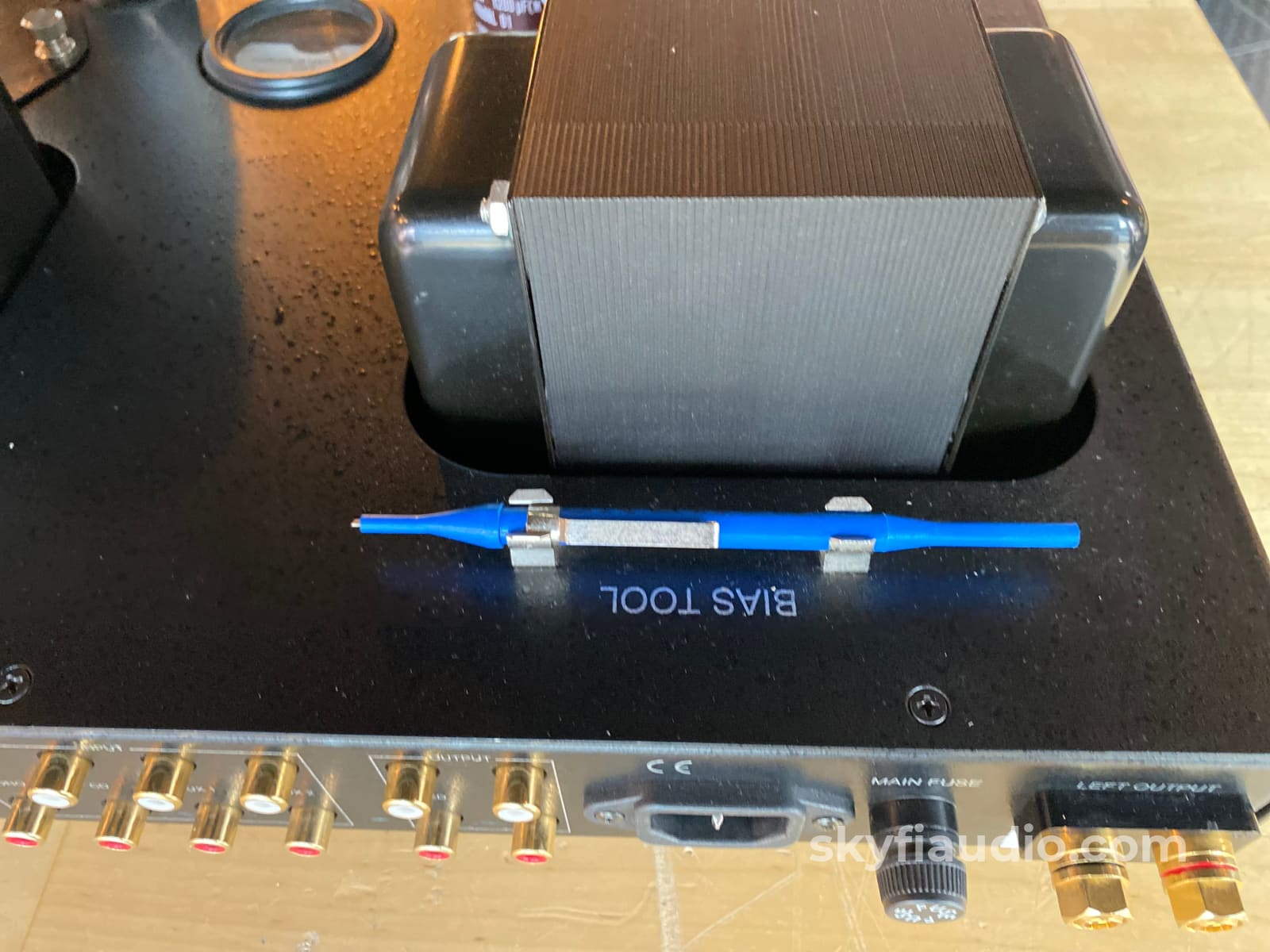
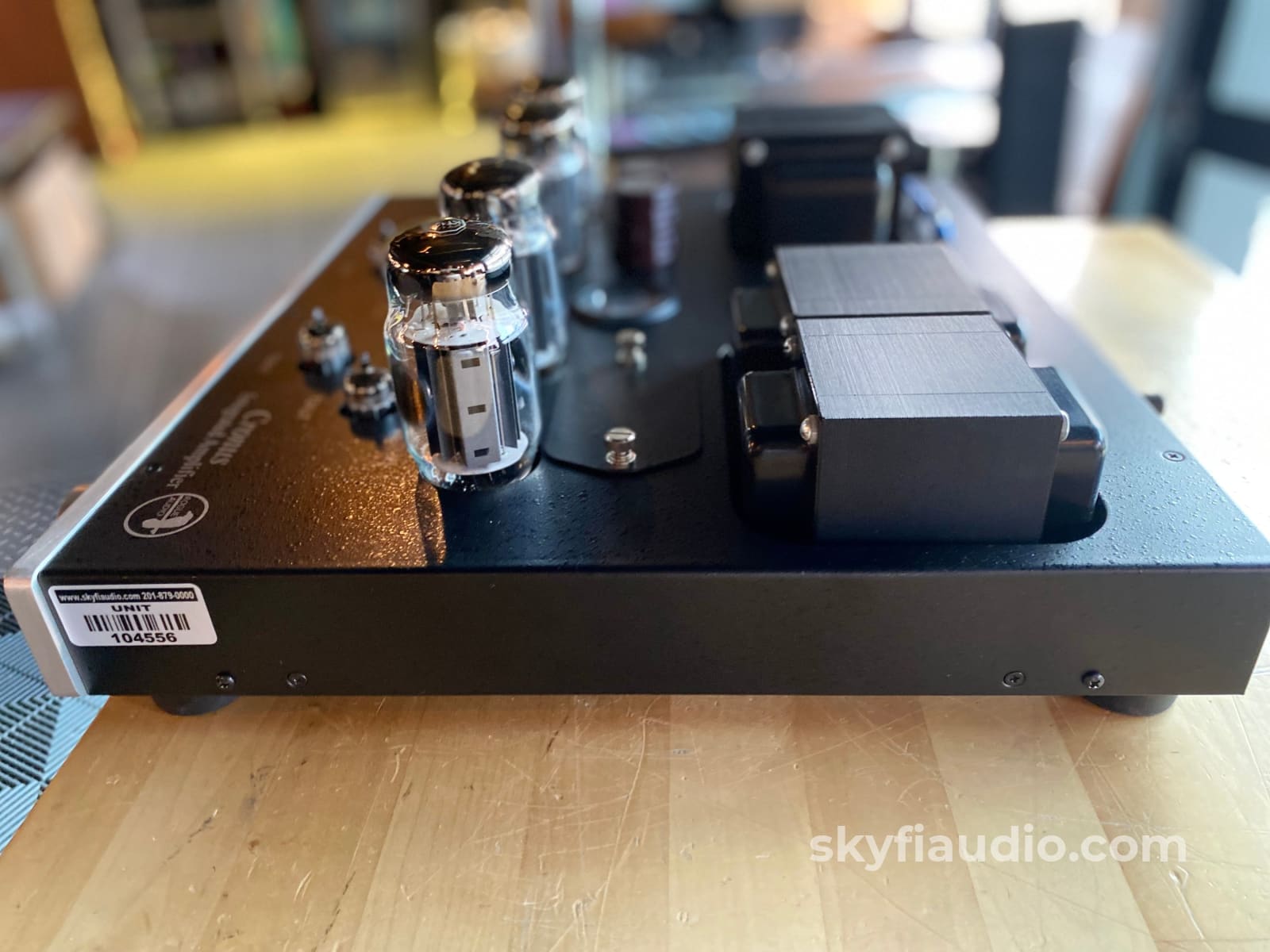
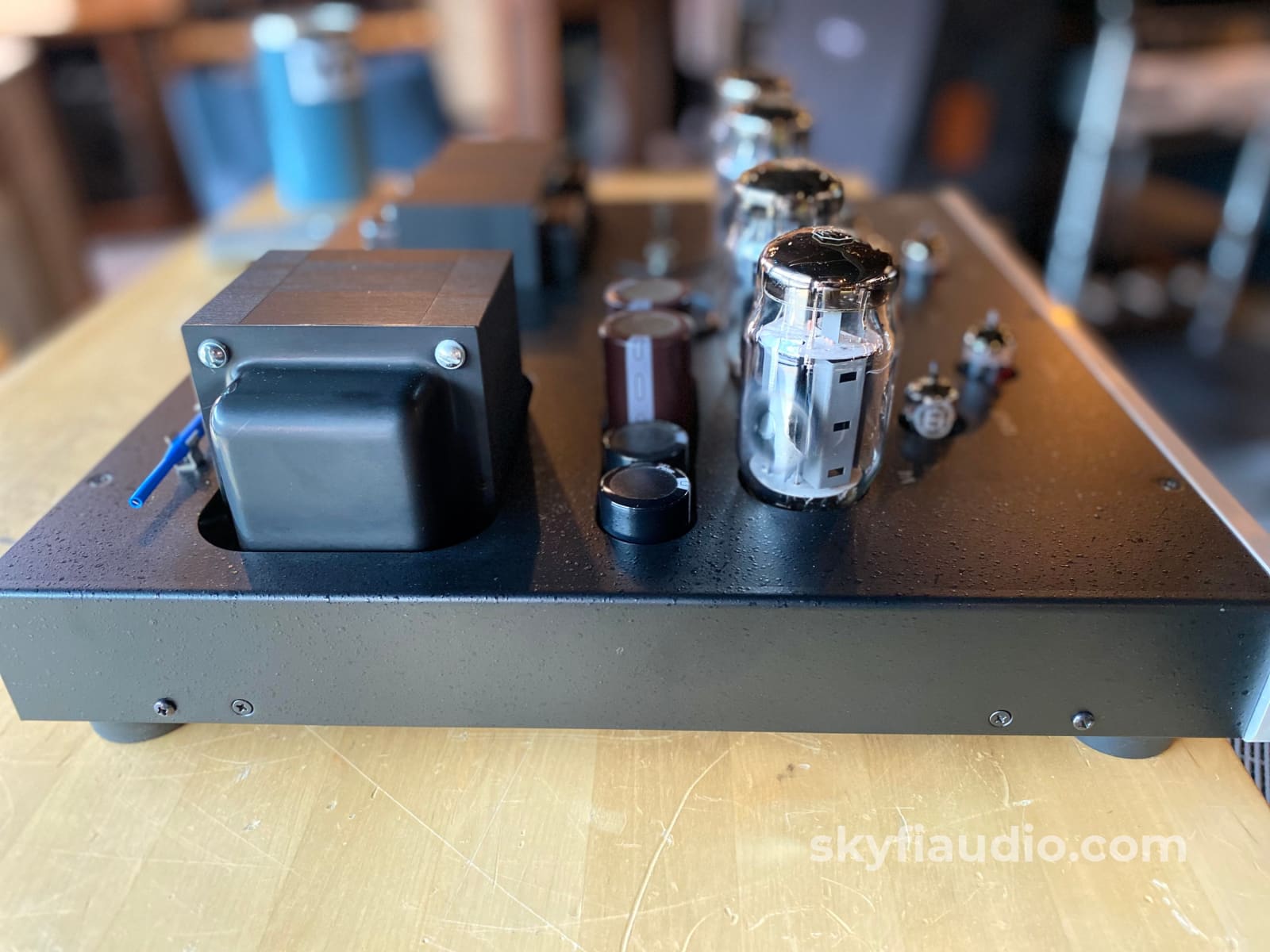
Rogue Audio Cronus Magnum Tube Integrated Amplifier w/Solid State Phono Stage
Free Shipping on Most Electronics - Excludes Speakers and Items Requiring Freight - Contiguous U.S. Only
Pickup currently unavailable at SkyFi 479

Rogue Audio Cronus Magnum Tube Integrated Amplifier w/Solid State Phono Stage
SkyFi 479
479 South Broad Street
Glen Rock NJ 07452
United States
General:
Entirely designed and hand built in the USA, this is the original version of the popular Cronus Magnum tube Integrated capable of connecting a turntable as well as three additional sources.
A remote control is included for ultimate convenience often not available in tube gear. And the front volume control dial is motorized to move in sync with your remote commands as an added touch.
The phono input is optimized for high output cartridges. Meaning MM (Moving-Magnet) and High Output MC (Moving-Coil).
Just biased and putting out a clean 60W per side. Currently installed tubes are Tung-Sol KT120's.
In great working and physical condition with little signs of use. We replaced a few tubes and biased the unit to get it working well.
More from Rogue Audio:
The award winning Cronus Magnum has garnered an enviable reputation in the high end audio world. Even at its attainable price, it outperforms other integrated amps costing many times more. The pure tube design provides a smooth, almost liquid sound that has made this amp a reviewer favorite. With circuitry borrowed from our most advanced amplifier designs, the Cronus Magnum's 100WPC effortlessly reproduce even the most demanding musical passages. Featuring a headphone amplifier and MM phono preamplifier the Cronus Magnum provides a complete solution to your amplifier needs.
From a technical standpoint the Cronus uses a triode preamplifier coupled to our excellent Atlas Magnum power amplfier. A large oversized linear power supply stores tremendous energy for low frequency response and dynamic headroom. The tube circuitry is cutting edge with short signal paths exacted in a low noise design. Finally, precision components are used to provide the transparency and air that are so critical to accurate musical reproduction.
Ownership:
Single Owner
Connections:
RCA inputs, 5 way binding post for speaker outputs. Removable power cord.
General Sound:
Smooth, uncolored, undistorted natural and clean
Cosmetic Condition:
7/10 = Good. One or two minor scratches. Well Maintained.. See our detailed rating description here.
Working Condition:
Working perfectly and tested in our lab and listening room.
Included:
Unit, remote, and power cord.
Packing:
Will be packed using our highly developed in-house process and custom packing materials.Reviews:
Click Here
Specs:
• Type: Tube, two-channel integrated amplifier with built-in phono stage.
• Tube complement: (2) 12AX7, (3) 12AU7, (4) KT120 output tubes
• Analogue inputs: One MM phono input (via RCA jacks) , three single-ended line-level inputs (via RCA jacks).
• Input impedance: High-level: not specified; Phono: 47kOhms
• Power Output: 100Wpc @ 8 Ohms
• Bandwidth: 20Hz – 30kHz
• Distortion: Not specified
• Signal to Noise Ratio: Not specified
Dimensions:
(H x W x D) 5.51" x 17.99" x 17.01" (140 x 457 x 432mm)
Weight:
50 lbs.
Recommended Cables:
Kimber Kable - RCA Interconnects - Better
Kimber Kable - RCA Interconnects - Best
Kimber Kable - Phono Interconnects - Better
Kimber Kable - Flagship Phono Interconnects - Best
Kimber Kable - Power Cords - Better
Kimber Kable - Power Cords - Best
Link to Manual:
Click Here
Testing Process:
We start with a visual inspection of all internal components to make sure that there are no signs of heat stress or damage. Capacitors are checked for telltale signs of predictive failure including bulging, shrunken wrappers, or physical leakage. We also inspect the PCBs for discoloration from resistors or transistors that may have been running hot. On vintage units we often spot check select capacitors for value and ESR.
If the device has the ability to decouple the preamplifier from the power amplifier, we remove the jumpers and independently test each section. If the device cannot be decoupled, we assess the electronic condition of the piece by analyzing the speaker level output only.
We start by connecting the “preout” jacks of the integrated to a Sencore PA81 Power Analyzer which simulates real world loading conditions and gives us an oscilloscope interface. The first order of business is checking that the volume control works smoothly throughout its entire range with acceptable channel balance. This is accomplished by feeding a 1KHz sine wave into one of the preamp’s line level inputs while monitoring the preamp’s output on an oscilloscope. We then switch to a 1KHz square wave to test the tone controls, loudness function, and filters where applicable. During this step we are watching for equal alteration of the test signal by both channels. This also helps us identify dirty controls that will need treatment. Once the basic line stage functions are verified, we test each input individually. This is especially important for devices that use relays to select their sources. If the preamp section is equipped with a phono stage we test that as well. We use an inverse RIAA filter which allows us to feed a reference test signal into the phono input with the proper RIAA equalization and level. A square wave or sine sweep is used to verify that the device’s phono stage is faithfully reproducing the RIAA curve.
Next, we test the power amplifier section by connecting the integrated’s speaker outputs to a Sencore PA81 Power Analyzer which acts as a dummy load, DC offset monitor, and oscilloscope interface. We start with a low level 1KHz test signal at the “main in” jacks and slowly increase its amplitude while monitoring the output on an oscilloscope for signs of noise, clipping, distortion, or improper channel balance. We continue increasing the signal level until the amplifier reaches clipping. At this point we take an output power measurement and compare it to the spec sheet of the amplifier to verify proper performance.We finish off the bench evaluation with a 1KHz square wave check and a 20Hz to 20KHz sine sweep to assess the amplifier’s frequency response characteristics. This battery of tests will usually reveal if the amplifier has any issues that need further attention.
If the preamp and power amp both pass these tests, we reconnect the sections and verify that the preamp section can drive the power amp to rated power with a 1KHz tone on one of the line level inputs.
Before the device leaves the bench, we perform a listening test with actual music using a variety of preferred test tracks. Our benches are outfitted with familiar monitor speakers which help us identify inconsistencies that will not always show up on our test gear. The main things that we are listening for are hum or noise with no signal present, proper center image, clicks, pops, or any other obvious undesirable audio characteristics.
If the unit passes all of these tests it is moved to our long term testing rig where we simulate real word operating conditions for 6-8 hours. This allows us to monitor the unit for signs of thermal runaway or intermittent issues that only crop up when the unit has fully come up to temperature.
Choose options
